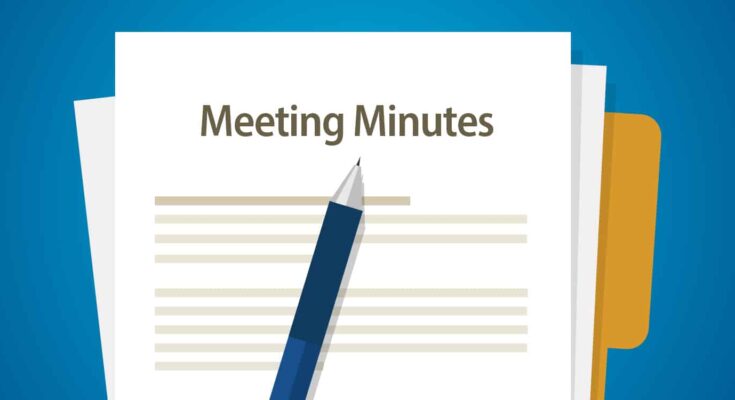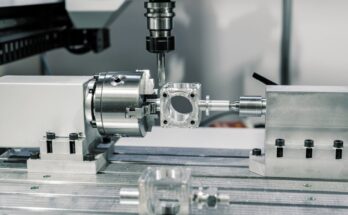Meetings are essential to any organization’s operations, whether a small business, a nonprofit, or a large corporation. One critical aspect of ensuring meetings are effective and productive is the accurate recording of minutes. But what are minutes of a meeting, and why are they so important?
In this article, we’ll explore what meeting minutes are, the purpose they serve, how to take them, and the best practices for creating professional and useful minutes. We’ll also provide some tips for being an effective minute taker.
What Are Meeting Minutes?
Taking Meeting Minutes( “A person taking meeting minutes with a pen and notebook”)
Minutes of a meeting are the official, written record of what transpired during a meeting. They capture the key points discussed, decisions made, and actions to be taken. Minutes serve as an important reference for participants and those who could not attend the meeting. They ensure everyone is on the same page and help in tracking the progress of tasks and projects.
The Importance of Meeting Minutes
Meeting minutes play a crucial role in the smooth functioning of an organization. Here are some reasons why they are important:
Legal Documentation
Minutes can serve as legal documents that provide an official record of decisions made during board meetings and other significant gatherings. They can be used in legal proceedings to show that decisions were made following proper procedures.
Accountability
Minutes assign responsibility for tasks and decisions to specific individuals or teams. This ensures that everyone knows their duties and can be held accountable for their completion.
Historical Record
Minutes provide a historical record of an organization’s decisions and actions over time. This can be invaluable for understanding the context of past decisions and for planning future actions.
Communication Tool
Minutes serve as a communication tool to inform those who were not present at the meeting about what was discussed and decided. They help ensure that everyone is informed and aligned with the organization’s goals and actions.
How to Take Effective Meeting Minutes
Meeting Discussion( “A group of people discussing around a table in a meeting”)
Taking effective meeting minutes requires preparation, active listening, and clear writing. Here’s a step-by-step guide to help you become a proficient minute taker:
Before the Meeting
1. Understand the Purpose: Know the meeting’s purpose and agenda. This will help you focus on the key points that need to be recorded.
2. Prepare a Template: Create a template that includes the meeting’s name, date, time, location, attendees, and agenda items. This will save you time during the meeting and ensure consistency.
3. Gather Materials: Bring all necessary materials, such as a notebook, pen, or laptop, and any previous meeting minutes for reference.
During the Meeting
1. Record Attendance: Start by noting who is present and who is absent. This is crucial for accountability and follow-up.
2. Capture Key Points: Focus on capturing the main points discussed, decisions made, and actions assigned. Avoid writing down everything verbatim; instead, summarize the key points.
3. Note Decisions and Actions: Clearly record any decisions made and actions assigned, including who is responsible and any deadlines.
4. Clarify When Needed: If you are unsure about something, don’t hesitate to ask for clarification during the meeting. It’s better to get it right than to guess.
After the Meeting
1. Review and Edit: Review your notes immediately after the meeting while everything is fresh in your mind. Edit for clarity and completeness.
2. Distribute Minutes: Distribute the minutes to all attendees and relevant stakeholders as soon as possible. This ensures that everyone is informed and can take necessary actions.
3. Store for Future Reference: Store the minutes in a central location where they can be easily accessed for future reference.
Best Practices for Professional Minute Taking
To ensure your meeting minutes are professional and useful, follow these best practices:
Be Objective
Minutes should be an objective record of what transpired during the meeting. Avoid including personal opinions or interpretations.
Use Clear and Concise Language
Write clearly and concisely, avoiding jargon and complex language. This ensures that everyone can understand the minutes, regardless of their background or expertise.
Follow a Consistent Format
Using a consistent format for your minutes helps ensure they are easy to read and follow. Include headings and bullet points to organize the information.
Include Key Details
Make sure to include all essential details, such as the meeting’s date, time, location, attendees, and agenda items. Clearly outline decisions made, actions assigned, and any deadlines.
Proofread
Before distributing the minutes, proofread them for any errors or omissions. Accurate minutes reflect positively on your professionalism and attention to detail.
Tips for Being an Effective Minute Taker
Professional Minute Taker( “A professional minute taker writing notes during a meeting”)
Being an effective minute taker requires practice and attention to detail. Here are some tips to help you excel in this role:
Stay Focused
During the meeting, stay focused on the discussion and avoid distractions. This will help you capture all the important points.
Develop a Shorthand System
Develop a shorthand system to quickly jot down notes. This can save you time and help you keep up with the discussion.
Listen Actively
Active listening involves paying close attention to what is being said and identifying the key points. This skill is crucial for taking accurate minutes.
Stay Neutral
As a minute taker, it’s important to remain neutral and objective. Record what is discussed without adding your own opinions or interpretations.
Practice
Taking effective minutes is a skill that improves with practice. The more you do it, the better you will become at identifying key points and summarizing discussions.
Conclusion
Meeting minutes are an essential tool for any organization. They provide a clear and concise record of what transpired during a meeting, ensuring accountability, transparency, and effective communication. By following best practices and honing your minute-taking skills, you can create professional and useful minutes that benefit your organization.
Whether you’re a small business owner, a startup founder, or a marketing manager, understanding how to take effective meeting minutes can help you run more efficient and productive meetings. So, the next time you’re tasked with taking minutes, remember these tips and best practices to ensure your minutes are accurate, clear, and professional.



